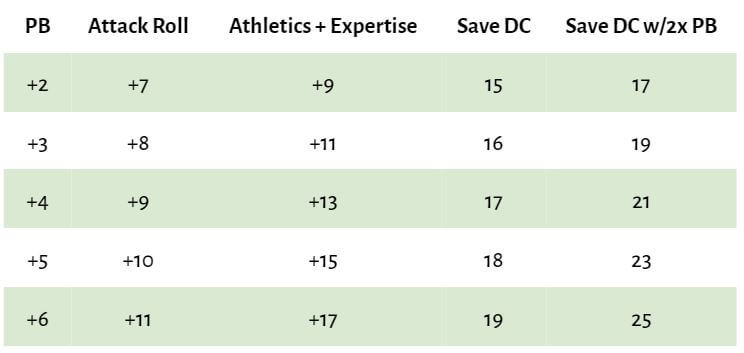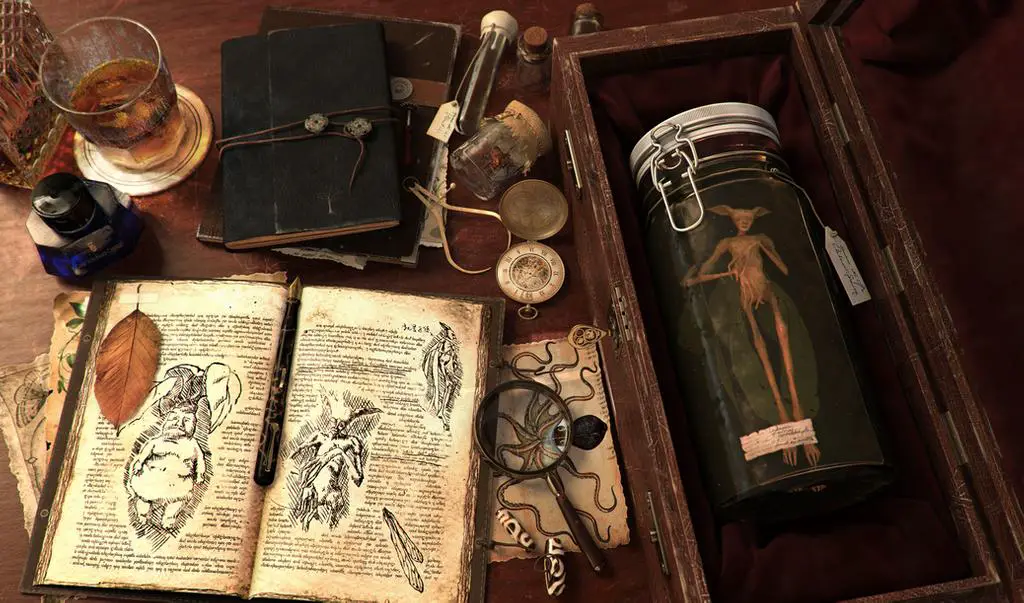One D&D top 10 changes featured image licensed through Adobe Stock. This article contains affiliate links that put gold in our coffers.
On August 18th, we were given a big look at the playtest packet for the upcoming changes we’ll be seeing to Dungeons & Dragons, operating under the working title, “One D&D.” These changes look to integrate themselves fairly seamlessly into the current 5e system. While the playtest has its hick-ups–as we could expect from design concepts–I was so impressed with the majority of what I saw that it reignited my optimism for what the future of Dungeons & Dragons has to hold.
In this article, I’ll be going through the things I was most excited to see in this Unearthed Arcana, and give some predictions of what these changes imply about the rest of the system from the perspective of a professional third-party 5e designer. Personally, I’m extremely optimistic for what this evolution is shaping up to be, because we’re seeing buffs to neglected options, clean-ups of exploitable features, and some stealth changes to options not directly listed in the packet.
#10: The Healer Feat Is More Versatile in One D&D
I’m not sure too many players would say they felt the Healer feat has been core to characters they’ve created. The intention has always been to allow for characters to provide a form of nonmagical healing outside of a short or long rest. Now we’re seeing Wizards of the Coast finally utilizing a piece of tech that has been sorely neglected in official work, but explored extensively in the homebrew scene; Hit Dice.
Hit Dice hold the narrative of natural healing and can be interpreted as a sort of “stamina.” The Battle Medic aspect of the mechanic now finally allows you to mend an ally and grant them the ability to spend their Hit Dice. Now, the feat itself is looking viable for play, but the thing that has me most excited about this is the fact that Wizards of the Coast has officially dipped their toes into Hit Dice mechanics. This has me curious about possible new official spells that utilize this oft-forgotten piece of the game.
#9: Streamlining Descriptions with “d20 Test”
Okay, so while I’m not sold on d20 Test as a codified term, as a layout artist, I’m all here for reducing the “attack roll, ability check, or saving throw” wording that bloats out mechanical text. I wouldn’t call this a home-run, but it’s a step in the right direction. Now we call out the specifics in design and leave the broad d20 rolls up to a d20 Test wording.
Now for the tricky part; I think Wizards of the Coast fumbled the ball on the implementation of Inspiration on “crit-rolls.” As an admirer of Kids on Bikes, I love the idea of “failing forward” wherein players are encouraged to lean into failures by gaining a bonus to future rolls when they fail. I’ve never been able to get behind the idea that an auto-success should be rewarded beyond the character’s hard control of the narrative like what was proposed in this Unearthed Arcana. The player didn’t earn anything. A d20 roll isn’t a test of skill; it’s a test of luck.
What I really love the idea of is rewarding Inspiration to players that roll a nat1. Learning from adversity, experience gained from failing, adapting, whatever you want to call it, at the very least, we know from running systems that do so that this type of mechanic takes a lot of the “anti-fun” out of failure. It also doesn’t enhance the thing that generates the Inspiration, which personally just feels off. If the current wording is what we see in the final published version, I’m pretty sure this would be the first house rule I’d throw in.
#8: Rock Gnomes Are More Appealing in One D&D
This gnome lineage was always my favorite, but I absolutely gushed over it when I was looking at the Unearthed Arcana on livestream. Gnome managed to get nothing but buffs and flavor enhancements, with rock gnome getting the lion’s share of the latter.
In a way, their unique use of prestidigitation is the kind of thing I wish Artificer’s Magical Tinkering feature would have wound up; a feature that rewards creativity and builds off of a piece of tech we’ve already come to love throughout the edition. They managed to buff what used to be a low-utility shenanigan feature into probably my favorite mechanic in terms of flavor out of this entire package. We had been looking at mending as the precedent for what it meant to be a magical crafter in this game, but it turns out prestidigitation was the perfect answer the whole time.
While I think both gnomes could still use a little bit of love in the form of something more “active” in their kit, this is the most eager I’ve been to roll up a rock gnome in my entire time in the hobby.
#7: The Alert Feat and Initiative Swap
Most people were picking up Alert for the +5 bonus to Initiative, which was pretty insane at 1st level. While this seemed originally like the go-to feat for a scout playstyle, this new version with the Initiative Swap mechanic almost feels tactician. We got a smooth proficiency bonus-based gradient as an early-level nerf for the Initiative bonus, but Wizards wasn’t about to take something away without giving us something else, and oh boy did they ever.
Initiative Swap makes this a must pick-up when running a party composition that includes the Bugbear from Monsters of the Multiverse. Their Surprise Attack trait is going to dominate in parties trying to prioritize letting the bugbear go first. This amount of control your party gets over the initiative order isn’t just powerful; it rewards strategic planning and cooperation in a way that honestly feels like it could have been a subclass’ defining feature.
#6: The Changes to Humans in One D&D
When Lineage was first announced in Tasha’s Cauldron of Everything, it seemed like even the all-powerful Variant Human had lost any appeal compared to the multitude of other options. Besides, who wants to play a human when you play one in real life, right?
Well, glad to see Wizards of the Coast took note, because playing as a Human is the only way you can now have two feats at 1st level with any build. Due to the synergy of feats like Sentinel and Polearm Master, this opens up a massive array of early-level builds for the often overlooked, humble human. The additional skill is nice, and the freebie Inspiration once per long rest isn’t anything to scoff at, but getting two feats in a system where everyone else gets one is stronger than one feat in a system where everyone else gets none. Two Magic Initiates on spellcasters essentially doubling your number of cantrips, spells known, and “spell slots” at 1st level, Tough and Heavy Armor Master for tanks, rolling out with a Fighting Style and Martial Adept for virtually any martialist?!? Think of it like this; let’s put a numerical value on a feat of ‘1’. You would think that two feats would be:
1 + 1 = 2
but it’s more like:
1 + 1 = 2 + (1 with synergy)
Human always needed something to draw players in, outside of a variant in a sidebar. They didn’t just get a “port” and a few new features; they managed to buff the free Feat without changing the mechanic. This Human will be a core piece of so many optimized builds in the future, mark my words.
#5: Dwarf Is More Interesting in One D&D
Much of the dwarf we have come to know and love has remained mostly intact, with Dwarven Toughness moving out of the Hill Dwarf and into the core. Since ability score increases, and armor and weapon proficiencies aren’t looking to make it into conventional race designs moving forward, Mountain Dwarf was completely gutted. From the sound of it, the design team also felt the Stonecunning ribbon feature from the Player’s Handbook dwarf just didn’t have enough weight behind it to blow players’ skirts up so it was also removed.
Oh wait, what’s that? Oh right, no, they turned it into tremorsense. They turned a situational Intelligence (History) check into an all-out 10 minute duration of detecting creatures within the ground or walls. This was a HUGE buff to a race that was already going to wind up with poison resistance, +1 Hit Point per level, 60 feet of darkvision, and a Tool proficiency. Oh yeah, and they brought their speed up to 30 feet. These changes in design philosophies resulted in likely the strongest race from the Unearthed Arcana.
Now, let me put on my designer hat here for a second: I don’t expect Dwarf is going to come out of this playtest unscathed. I’m allowing my current Dwarf player to take these changes to see how it all works out, but I’ve been hearing about Dwarf scoring a 25 on the Musicus meter and all the other races getting around 14-15, so we’ll have to see.
#4: Unarmed Strikes & Monks in One D&D
Unarmed Strikes are getting a significant change in this playtest, now being the way in which a character will grapple and shove creatures. This appears to be targeting Athletics Expertise-based grapple builds, which mathematically were likely overperforming compared to other effects in the game that inflict conditions. Grapples and Shoves are the only way as per the rules that a character can currently inflict a detriment onto the enemy through an ability check, and Expertise-like mechanics mean these skills just don’t “sync up” with the rest of the math to this game.
That could sound confusing, but let me give a mathematical representation for why I think this change was made, assuming characters with a 20 (+5) in the relevant stat:

I’m fully aware 1st-level characters won’t have a +5 to the applicable stat at most tables, but that’s not what’s important here. What’s important is to see the increase in reliability of grappling and shoving compared to other methods of inflicting conditions, which are nearly always restricted to an attack roll or saving throw. This isn’t the kind of thing that I feel needs “urgent addressing”, but I can see the logic behind the change.
What we now have is a reasonable nerf, with a buff to usability. This is also a significant buff to Monk, who now has a huge amount of control now baked into their kit, but a noteworthy nerf to Barbarians that really don’t have much combat relevance for their Rage bonus to Strength-based ability checks (which is why I think we’ll see them get a rework).
#3: Eldritch Blast’s Absence from Cantrip Lists
So this is one verges on speculation, but it’s worth noting that the signature warlock cantrip is absent from the Arcane spell list, despite warlock’s inclusion in the “Arcane Classes.” It’s been widely understood that eldritch blast’s unique mechanic as a cantrip where each of the bolts is a separate attack, potentially targeting multiple creatures, with Eldritch Invocations enhancing the power of the cantrip, dealing the most reliable damage type in the game–force–that it is essentially build-defining for most arcane casters.
The issue isn’t necessarily the mechanic’s existence; it’s that eldritch blast incentivizes players to multiclass or take feats just to get it. It hasn’t ever felt right as a cantrip, especially when so much of the warlock class seems to be telling players to take it. The speculation is that Wizards of the Coast is taking one of the most frequently suggested fixes amongst the homebrew scene: turn eldritch blast into a warlock class feature rather than a cantrip. This would remove it from the pool for Magical Secrets, Magic Initiate, and it opens up design space for subclasses enhancing damaging cantrips and Metamagic options. No longer having to design around this spell sounds like a nerf to other classes, but there’s now plenty of room for us to explore new territory for damaging cantrips with other spellcasters.
This may sound like “taking a toy away,” but I promise you this is a gift to everyone for now, and will reap more rewards in the future.
#2: One D&D Nerfs the Lucky Feat
The changes made to Lucky may be confusing to some, because at first glance it seems like 5e’s most notoriously overpowered feat got a buff. Additional uses at higher levels aside, this is a nerf because a key issue has finally been addressed after seven years.
What happened was a targeted change at an exploit where the order of operations for rolling with disadvantage meant that applying a Luck point would cause the roll to be made with what I’ll just call “super advantage.” When disadvantage comes into play, an additional d20 is rolled and the lower result is to be used. Lucky’s original wording meant that a third d20 would be rolled and the player could choose which of the three d20s were used for the roll. Players were abusing this by “blind firing” (closing their eyes to effectively “blind” themselves to make an attack with disadvantage), which–as funny as it sounds–wasn’t how the mechanic was intended to function. This is something we’d consider to be an exploit in design. As far as the attack made against you, this isn’t really as prevalent with advantage because the order of operations assumes the advantage happens before the roll in this case.
What these changes did were hard-code causing the roll to be made with Advantage or Disadvantage. Simple, clean, and fixes the exploit 100%. I personally feel like the feat doesn’t really convey the “narrative of luck” well, but I’m happy to take the change.
#1: Custom Character Backgrounds That Matter
Backgrounds are now playing the role they always needed to: they truly define your character’s culture and vocation leading up to your adventures. I wrote the product, “Narrative-Driven Character Creation” back in 2020, which applied a similar philosophy with the +2 determined by your Background, and the +1 being determined by your Class. Without touching on the moral issue of a mechanic defining your race’s mental capabilities, this is just narratively a much more pleasing place for your ability scores to be determined and it’s a massive step in the right direction.
There’s been a criticism of backgrounds listed granting you a language, potentially echoing racial stereotypes since so many of Dungeons & Dragons’ languages originated from the different races. The problem is, these arguments are choosing to ignore that these backgrounds are example backgrounds. The blank-slate “Build Your Background” is now the default. Wizards of the Coast gives you free range to swap out anything in the language with the given guidelines. They made a Farmer who knows Halfling, which does not mean Wizards of the Coast is implying Halflings are supposed to mirror any real-life ethnicity. A Gladiator that knows Orc isn’t implying all orcs are blood-thirsty.
We’re seeing an often overlooked aspect of your character brought to the forefront in a way that helps determine more about who you are, rather than seeing what are clearly cultural aspects treated similarly to biological traits. This is a huge step in the right direction for narrative conveyance in the system and, among everything in this playtest, Backgrounds stepping up in relevance for your character is my favorite change I’ve seen in the One D&D playtest material.
Optimistic about One D&D
Many players are feeling optimistic about the future of D&D when One D&D comes in 2024. Other players are skeptical. What did you find to be noteworthy in the first One D&D Unearthed Arcana document? Cast Message in the comments to tell us what you think.
You can find additional articles by Taron “Indestructoboy” Pounds here.




The whole point of gating with leveled feats is to remove the possibility of combining two overpowered feats at 1st level – such as the example you use, Sentinel and Polearm Master, which (I assume) will only be accessible at higher levels. Humans can get two *level 1* feats which is much more balanced than getting two level 4 or level 8 feats.
Lucky and Alert have been nerfed for players who were exploiting their mechanics (otherwise improved), and the armor proficiency of the Mountain Dwarf has also been removed, taking away another popular way of avoiding being squishy as a spellcaster. With Eldritch Blast assumed to be become a Warlock-only features then all in all, plus gated Feats, a lot of balance-changing exploits have been removed, which I think is great.
Unfortunately one exploit has been added, which is Inspiration. If you have a tough Thieves’ Tools check coming up you will suddenly feel the need to do some extra perception and investigation checks in the neighborhood (just double-checking for traps, honest) until you get a nat20 (or nat1, whichever way they go) and then use your gamed Inspiration to do your tools check with advantage. This will slow the game down. I’ve toyed with the idea of providing a d4 instead of advantage for inspiration but that is also open to gaming. For me, the inspiration mechanic simply doesn’t work and needs to be dropped – go back to ‘at DM discretion’. The Musician feat should probably be reworked to provide a d4, for a similar reason (yawn – I suddenly feel the need for a short rest before tackling this task). On the flip side that will make the Human ability to gain Inspiration more unique.
Overall I agree, I like the direction. I like the extra balance, and I’m a fan of the backgrounds too.
Point number 6 is incorrect. This new Unearthed Arcana doesn’t let Humans have two feats at level one. They only get to choose one feat.
*Versatile: You gain the Skilled Feat, or another 1st-level feat of your choice.*
Not, “and another 1st-level feat,” but, “or another.”
This trait is poorly written, because if you can choose anyway, why not just say that? “You gain a feat of your choice at 1st level.”
Hi Kdogprime,
#6 is correct. You would get one feat from being human and one feat from the new background format. All characters will get a feat at level one from their background, and the human gets another one.